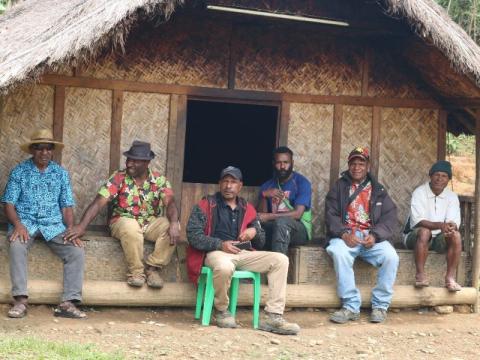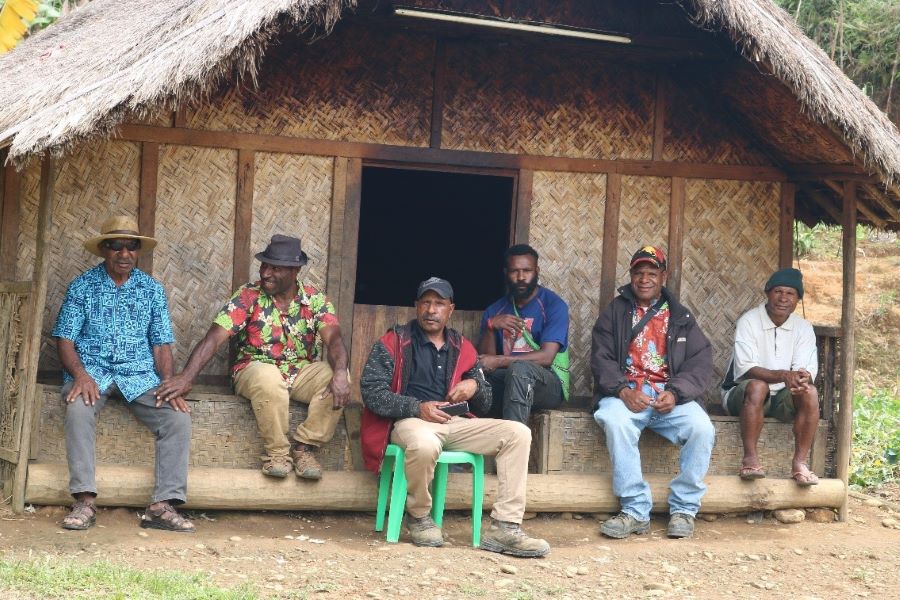Disaster Risk Reduction Training in Southern Highlands Drives Peacebuilding

“This disaster training from World Vision has come at a very crucial time when we, the people of Sepionda here in Porolo Ward in Lower Mendi sharing the border of Mendi Munihiu and Imbongu electorate who till and work the land are realizing that the weather patterns are changing,” Richard declares.
As part of the DRR Project, Community Based Disaster Risk Management (CBDRM) teams were established in 8 (eight) communities. The responsibility of these CBDRM teams was to identify disaster and natural risks in their community and find ways to mitigate these risks through the use of innovation using locally available materials and plants.
“In the times of our great, great grandfathers, here in Porolo ward in Mendi Munihiu and Imbongu electorate, they used to avoid and mitigate the effects of the groundbreaking and landslips, erosion and flooding by planting the big strong ‘pitpit’ plants, sunflowers and trees. But, since then, times have changed; our community has grown in numbers, and the climate is changing and we are experiencing more rain than ever before,” agrees David Onga, Land Mediator at Porolo.
Both David and Richard and 3 other men in the group were part of a group of 14(11 males and 3 females) participants from Sepionda to receive training on Disaster Risk Reduction (DRR) from World Vision through the Disaster Risk Reduction (DRR) project supported by the Australia Humanitarian Partnership (AHP).
David explains, “When I see there is continuous heavy rains, I use stones to try to control the waterways so we minimize flooding into areas where we live. I have also started planting trees around my house and near the water's edge to help with erosion and landslips. As part of the CBDRM here in Porolo Community, I am now advocating for and also training others using my knowledge from the World Vision DRR training to help my community as well.”

Participants in the DRR training were taught the reasons for ‘why’ natural disasters may occur. They were also taught that these natural phenomena have no superstitious connotations attached to them. Participants are also given the peace-building and conflict-resolution training through World Visions Peace Building Training looking through the lens of perspective steps on conflict resolution. So, when disasters occur, the disasters are explained as naturally occurring and not attached to any superstitious beliefs.
In the past, when disasters occurred, many people in the Sepionda community and surrounding areas accused the disasters of being sorcery-related or a form of payback, and conflicts escalated into full tribal warfare that could last generations. The DRR project with World Vision Peace Building Training helped participants to realize that they are natural, and not associated with any sorcery or superstitions.
At this juncture, Dream, the youngest in the group speaks, “It’s like divine intervention because after we had the training, only 1 week afterward, there was a massive landslide from Sepionda to Welit communities in our Ward. Many villagers there said it was a vengeful spirit displeased at its relatives in the village that caused it. Before the rumours escalated into violent retribution, our CBDRM members quickly intervened and interceded to explain the ‘true’ cause of the landslide and calmed things over before it could escalate into any violence,” he says.
He then leads us down to the water's edge and shows us some of the damage that the recent rains have left on the houses near the water’s edge at Sepionda village to show us some of the recent damage and how the locals are mitigating it following the training.

“We are so grateful that World Vision through the help of AHP partners was able to come to teach us something very new about disasters. We used to fight a lot before over small things and one of them was disasters that occurred in nature. Although we are much better off now, we could use more training, and support from our provincial disaster committee to help us reinforce our villages and build stone baskets and other innovations to mitigate natural disasters,” adds Community Leader Nelson Embisi.
“We now understand that landslides are natural phenomena that can occur due to excessive rain which causes the land to become unstable and break. Our weather patterns today are changing and it is affecting us and our livelihoods. Before we used to attribute landslides to traditional superstitious beliefs associated with displeased spirits or enemy clans wanting payback. We will make sure everyone in our community knows and understands this,” are the sombre parting remarks of Council Ward Member of Porolo, Richard Pipi.